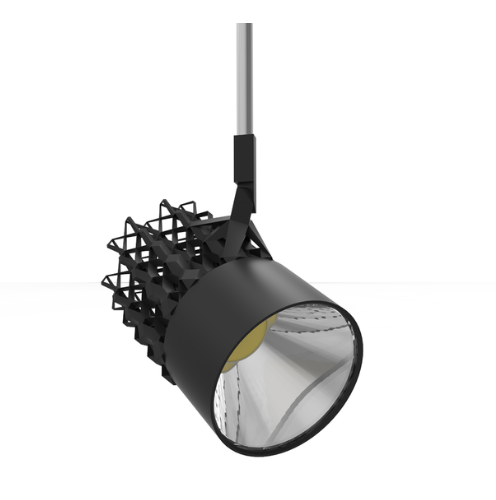![[Design concept of a high-power LED spot with a 3D printed aluminium heat sink for passive cooling / Source: AT Lightning Aps ]](https://fabbaloo.com/wp-content/uploads/2020/05/fixtures2_img_5eb08fdf595ca.png) [Design concept of a high-power LED spot with a 3D printed aluminium heat sink for passive cooling / Source: AT Lightning Aps ]
[Design concept of a high-power LED spot with a 3D printed aluminium heat sink for passive cooling / Source: AT Lightning Aps ]
Charles Goulding and Peter Favata of R&D Tax Savers delve into 3D printing in the lighting industry.
3D Printing for Lighting
On August 8th, 2019 two professors from the Lighting Research Center at Rensselaer Polytechnic Institute (RPI), Nadarajah Narendran, Ph.D. and Indika U. Perera, Ph.D. gave a presentation for the Illumination Engineering Society in Louisville, KY. This 50-slide presentation can be viewed here: 3D Printing: Can it work for lighting?
If you look back at our April 4th, 2019 article “The Lighting Industry, LRC, and the 3D Printing Industry Get Proactive” we talk about some major players in the lighting and 3D printing industries and how they were brought together and formed a discovery group. The joint effort of these companies – namely Acuity Brands Lighting, Current by GE, Desktop Metal, DSM, Eaton Corp., Finelite, Focal Point, Henkel, HP, Hubbell Lighting, Lumileds, Stratasys, Tempo Lighting, and Ultimaker – shows that collaboration between 3D printing and lighting companies has some serious potential.
In Narendran and Perara’s presentation, they compare the 3D printing processes available today, identify what fixture components can be made with today’s 3D print technologies, analyze the performance of 3D printed components compared to the performance of components made using traditional methods, and describe the impact of 3D printing on businesses. A brief summary of some of the slides is as follows.
How 3D Printing Can Change the Supply Chain
3D printing can make the supply chain much simpler when it comes to shipping LED light fixtures. Presently, the supply chain presently, the supply chain for LED light fixtures is comprised of a lengthy transportation process before reaching architects, as you can see from the image below.
![[Source: 3D Printing: Can it Work for Lighting? , Page 11]](https://fabbaloo.com/wp-content/uploads/2020/05/fixtures1_img_5eb08fdfbbab5.png) [Source: 3D Printing: Can it Work for Lighting? , Page 11]
[Source: 3D Printing: Can it Work for Lighting? , Page 11]
With 3D printing, the supply chain can be shortened drastically. The materials for 3D printing can be transported from storage to where the product can be designed and manufactured on site. This would increase local manufacturing and jobs, reduce carbon footprint, and produce higher-quality custom light fixtures, which would be great for the lighting fixture business being that the market is expected to grow above $35 billion by 2020. The typical 3D printing process would look like this: First, an engineer would design CAD drawings of what they would like to produce and generate .stl or other compatible files where the 3D model geometry is sliced before the product is printed and finished.
Lighting Products That Can Be 3D Printed
A number of lighting products can benefit from 3D printing compared to their traditionally manufactured counterparts.
Some examples of 3D printed parts for lighting applications are heat sinks, reflective optics, and transmissive optics. 3D printed heat sinks can reduce weight and cost while optimizing thermal management. 3D printed reflective optics provided no degradation during testing. A study of 3D printed transmissive optics proved to be identical to the manufactured optics.
Individuals or companies who are involved in 3D printing lighting fixtures could be eligible for R&D tax credits.
The Research & Development Tax Credit
Enacted in 1981, the now permanent Federal Research and Development (R&D) Tax Credit allows a credit that typically ranges from 4%-7% of eligible spending for new and improved products and processes. Qualified research must meet the following four criteria:
-
Must be technological in nature
-
Must be a component of the taxpayer’s business
-
Must represent R&D in the experimental sense and generally includes all such costs related to the development or improvement of a product or process
-
Must eliminate uncertainty through a process of experimentation that considers one or more alternatives
Eligible costs include US employee wages, cost of supplies consumed in the R&D process, cost of pre-production testing, US contract research expenses, and certain costs associated with developing a patent.
On December 18, 2015, President Obama signed the PATH Act, making the R&D Tax Credit permanent. Beginning in 2016, the R&D credit can be used to offset Alternative Minimum tax for companies with revenue below $50MM and, startup businesses can obtain up to $250,000 per year in payroll tax cash rebates.
Conclusion
3D printing in the lighting fixture industry would be a great way to lower costs as well as help to lower our carbon footprint. With the collaborative of the lighting and 3D printing industries facilitated by RPI, this opportunity should be on a fast track.

